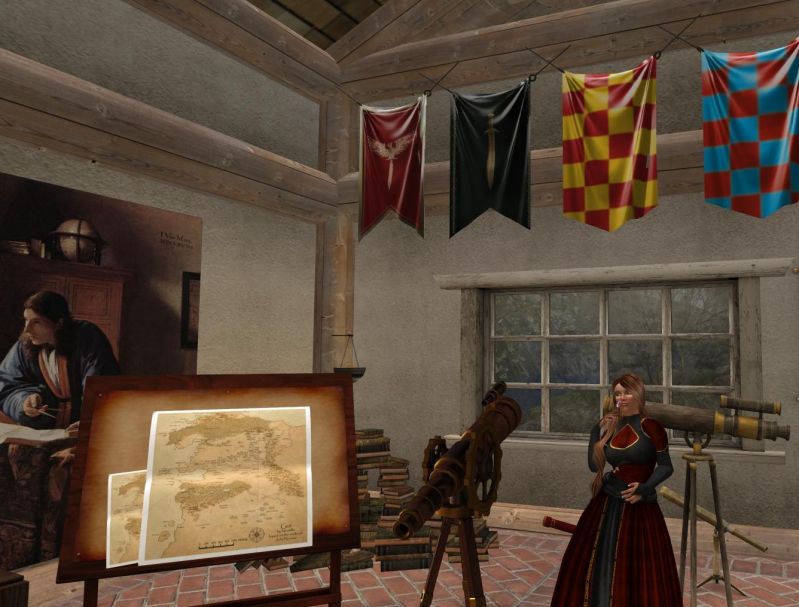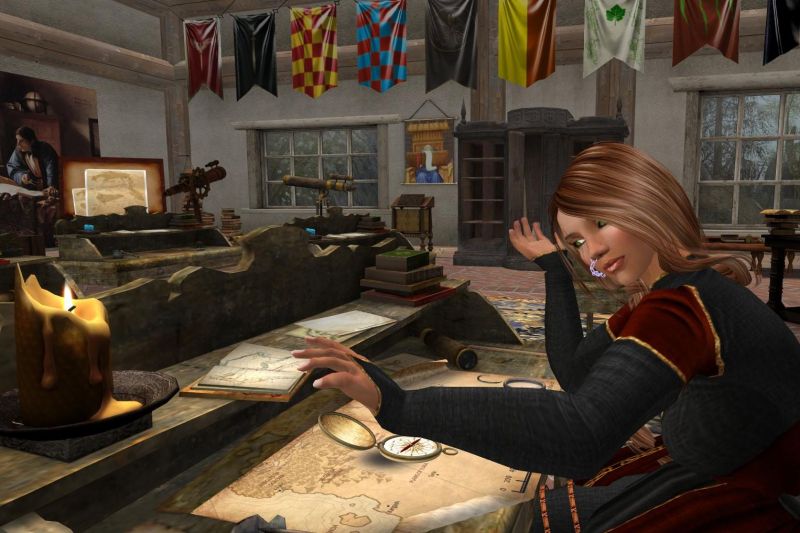Moonstruck
Gorean women are under strong influence of the 3 moons, it. When te 3 moons were up, their heat takes over.

The panthers women of Verna were restless when the 3 moons were soon to come up
Captive of Gor
"The circle," said another. "We must go to the circle!"
Verna stopped and turned.
"It is on our way," said another.
"Please, Verna," said another, her voice pleading.
(pg. 128) Verna regarded the girls. "Very well," she said, "we shall stop at
the circle."
The girls relaxed visibly.
Irritably, Verna turned, and again we continued on our way.
I understood nothing of this.
----
I saw two of the girls looking up at the moons. Their lips were
parted, their fists clenched. There seemed to be pain in their eyes.
"Verna," said one of them.
"Silence," said their leader.
It was no accident that we had stopped at this place.
One of the girls whimpered.
"All right," said Verna, "go to the circle."
----
The first girl began to dance before the square.
I looked up into the sky. In the dark sky the moons were vast and bright.
Another girl, crying out, tore her own skins to the waist and clawing,
moaning, writhing, approached the square. Then another, and another!
I did not even look upon Verna, so horrified I was at the barbaric spectacle.
I had not believed that women could be like this.
And then the first girl tore away her skins and danced in her golden ornaments
beneath the huge, wild moons, on the grass of the circle, before the square.
I could not believe my eyes. I shuddered, fearing such women.
Then suddenly, to my amazement, Verna cried out in anguish, a wild, moaning,
anguished cry, and threw from herself her weapons and tore away her own skins
and leaped into the circle, turning and clawing and crying out like the
others. She was not other than they, but first among them! She danced
savagely, clad only in her gold and beauty, beneath the moons. She cried out
and clawed. Sometimes she bit at another girl or struck at her, if she dared
approach the square more closely than she, writhing, enraged, but fearful,
eyes blazing, dancing, they fell back from her.
She danced first among them, their leader.
Then, throwing her head back, she screamed, shaking her clenched fists at the
moons.
And then, helplessly, she threw herself to the grass within the square,
striking at it, biting and tearing at it, and then she threw herself on her
back and, fists clenched, writhed beneath the moons.
One by one the other girls, too, violently, threw themselves to the grass,
rolling upon it, and moaning, some even within the precincts of the square,
then throwing themselves upon their backs, some with their eyes closed, crying
out, others with their eyes open, fixed helplessly on the wild moons, some
with hands tearing at the grass, others pounding (pg. 134) the earth piteously
with their small fists, sobbing and whimpering, their bodies uncontrolled,
helpless, writhing, under the moons of Gor.

How did the another women knew that the 3 moons would come up, had they knowledge of advanced astronomy, did they consult Initiates, doubtful, since they were outlaws. It's however known that the women of Gor used moon calenders. Among the wagonpeople it was called the Bosk calender
Nomads of Gor
the women of the Wagon Peoples, incidentally, keep a calendar based
on the phases of Gor's largest moon, but this is a calendar of fifteen
moons, named for the fifteen varieties of bask, and functions inde-
pendently of the tallying of years by snows; for example, the Moon
of the Brown Bosk may at one time occur in the winter, at another
time, years later, in the summer; this calendar is kept by a set of
colored pegs set in the sides of some wagons, on one of which,
depending on the moon, a round, wooden plate bearing the image of
a bosk is fixed.
Lady Aphris, the Kataii yearkeeper, did not keep the sun years, since the sun was the power of the men. No, she was keeper of the more mystic moon calender. She studied the nightly heaven, and sometimes consulted scrolls and measurements done by other female scientists for instance at the Gorean Campus

This is not something John Norman invented, mythologists alrready mentioned that the difference betwen the patriarchal sun worshippers (Mycenians, Greeks) battled the more ancient societies based on Moon goddesses (Pelasians).
Robert Graves (I Claudius):
Graves interpreted Bronze Age Greece as changing from a matriarchal society under the Pelassians to a patriarchal one under continual pressure from victorious Greek-speaking tribes
or
The Greek Myths presents the myths as stories from the ritual of all three stages, and often as historical records of the otherwise unattested struggles between Greek kings and the Moon-priestesses.
NB these are ideas of Robert Graves and others. Cultural Antropology research does not show any matriarchal societies. However ancient Bronze Age societies with powerful female priesteses have excisted, for instance the Isthar cults (Astarte) at the Semitic peoples.
Maak jouw eigen website met JouwWeb